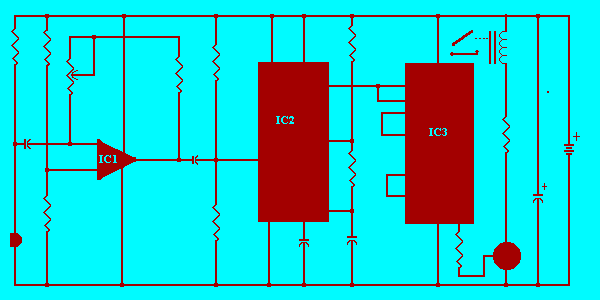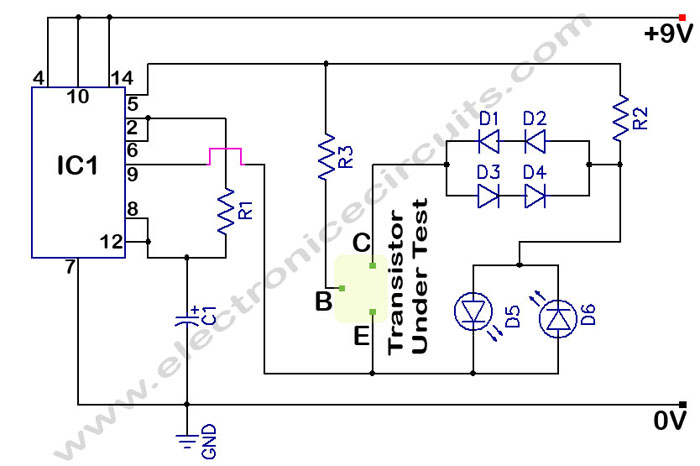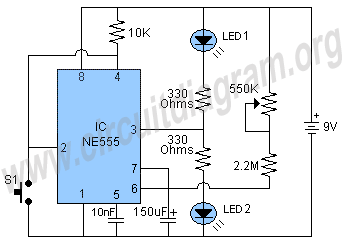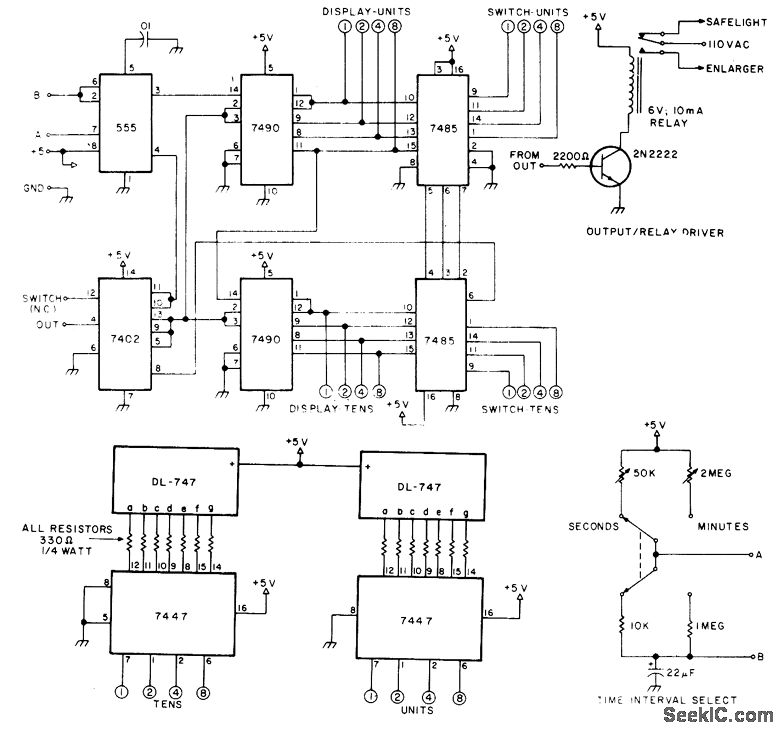
A Bedside Lamp Timer Circuit Schematic With CD4060 IC
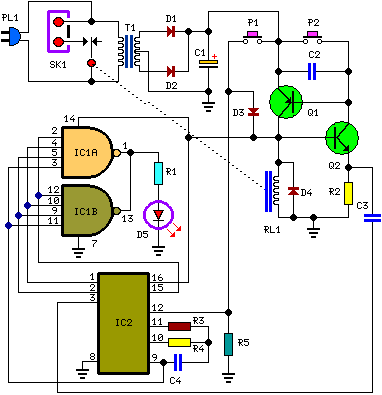
The following circuit illustrates the Bedside Lamp Timer Circuit utilizing the CD4060 integrated circuit (IC). It operates for 30 minutes, with a blinking LED indicating the last 6 minutes of operation.
The Bedside Lamp Timer Circuit is designed to provide a timed illumination feature using the CD4060 IC, which serves as a timer and oscillator. The circuit operates on a voltage range typically between 3V to 15V, making it versatile for various power supply options.
The CD4060 IC is configured in such a way that it generates a square wave output, which can be used to control the operation of the lamp. The timing period is determined by external resistors and capacitors connected to the IC. For a 30-minute operation, specific resistor and capacitor values must be selected to achieve the desired timing.
The blinking LED acts as a visual indicator of the remaining time, flashing at a rate that becomes more frequent as the timer approaches its end. This is typically accomplished by connecting the LED to a separate output pin on the CD4060 that is configured to toggle at a specific frequency during the last 6 minutes of operation.
Additionally, the circuit may incorporate a relay or a transistor switch to control the lamp's power, ensuring safe operation and isolation from the low-voltage control circuit. A diode may also be included in the circuit to protect against back EMF generated by the relay coil.
Overall, the Bedside Lamp Timer Circuit with CD4060 provides a practical solution for timed lighting, enhancing convenience in various applications such as bedside lamps, night lights, or other timed illumination needs.The following circuit shows the Bedside Lamp Timer Circuit With CD4060 IC. 30 minutes operation, Blinking LED signals 6 last minutes before .. 🔗 External reference
The Bedside Lamp Timer Circuit is designed to provide a timed illumination feature using the CD4060 IC, which serves as a timer and oscillator. The circuit operates on a voltage range typically between 3V to 15V, making it versatile for various power supply options.
The CD4060 IC is configured in such a way that it generates a square wave output, which can be used to control the operation of the lamp. The timing period is determined by external resistors and capacitors connected to the IC. For a 30-minute operation, specific resistor and capacitor values must be selected to achieve the desired timing.
The blinking LED acts as a visual indicator of the remaining time, flashing at a rate that becomes more frequent as the timer approaches its end. This is typically accomplished by connecting the LED to a separate output pin on the CD4060 that is configured to toggle at a specific frequency during the last 6 minutes of operation.
Additionally, the circuit may incorporate a relay or a transistor switch to control the lamp's power, ensuring safe operation and isolation from the low-voltage control circuit. A diode may also be included in the circuit to protect against back EMF generated by the relay coil.
Overall, the Bedside Lamp Timer Circuit with CD4060 provides a practical solution for timed lighting, enhancing convenience in various applications such as bedside lamps, night lights, or other timed illumination needs.The following circuit shows the Bedside Lamp Timer Circuit With CD4060 IC. 30 minutes operation, Blinking LED signals 6 last minutes before .. 🔗 External reference
